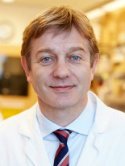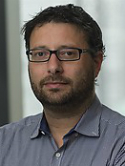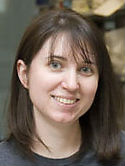GVHD, hematopoietic, dysfunction, and post-transplant immune, deficiency: Loss of marrow function, leads to ineffective extramedullary hematopoiesis, however lymphoid reconstitution is restored by the synergistic effects of KGF, sex steroid ablation, and precursor T Cell adoptive therapy Meeting Abstract
| Authors: | Dudakov, J. A.; Hanash, A. M.; Rao, U. K.; Holland, A. M.; Jenq, R.; Goldberg, G. L.; Boyd, R.; van den Brink, M. R. M. |
| Abstract Title: | GVHD, hematopoietic, dysfunction, and post-transplant immune, deficiency: Loss of marrow function, leads to ineffective extramedullary hematopoiesis, however lymphoid reconstitution is restored by the synergistic effects of KGF, sex steroid ablation, and precursor T Cell adoptive therapy |
| Meeting Title: | 52nd Annual Meeting of the American Society of Hematology (ASH) |
| Abstract: | Allogeneic hematopoietic stem cell transplant (allo-HSCT) is one of the only curative therapies for leukemia patients and others with hematological Malignancies. Its use, however, is restricted by several major complications, including graft versus host disease (GVHD) and post-transplant immune deficiency. Previous studies have found that GVHD can cause significantly reduced hematopoiesis and significant loss of hematopoietic stem and progenitor cells within the BM niche. Moreover, post-transplant immune deficiency, which is especially devastating-to, the T cell compartment, occurs independently of GVHD in autologous HSCT as well as following immunodepletion from chemotherapy and/or radiation therapy. This profound immune deficiency may be long-lasting and further exacerbated by GVHD that may be targeting hematopoietic reconstitution. Here we demonstrate that in both minor and major-mismatched models of GVHD there is significant depletion in the BM of hematopoietic stem cells (p<0.001) and downstream multipotent progenitors (MPP, p<0.001), leading to significantly reduced B-lymphopoiesis (p<0.001) and myelopoiesis (p<0.001) in the BM and reduced T cell development in the thymus. This impaired hematopoiesis led to reduced,hemoglobin, lymphocytes and platelets in the circulation. In addition to the reduced presence of marrow-derived HSC and progenitor phenotypes, we observed a significant defect in the intrinsic functional capacity of these HSCs to repopulate the immune system in a competitive setting (p<0.01). Assessing the impacts of GVHD on hematopoietic precursors in secondary lymphoid organs revealed a similar decline in the number of CD48(+)CD150(+) and CD48(+)CD150(-) MPP cells in peripheral and mesenteric lymph nodes (p<0.05) and payer's patches (p<0.05). Surprisingly however, there was an increase in the number of these MPPs in the spleens of GVHD animals (p<0.01). Interestingly, despite this increase in splenic MPPs, there remained a significant decline in splenic, but also in PLN and MLN, of lymphoid committed Lin-CD62(+)Thy1(+) progenitors (p<0.01), further demonstrating the ineffective hematopoiesis during GVHD that affects both the lymphoid and myeloid compartments. In order to address this ineffective lymphopoiesis and post-transplant immune deficiency, we assessed the-Capacity of combination strategies to enhance immune reconstitution. Previous work by our lab and others has revealed several promising strategies for enhancing immune regeneration in both aged and immunocompromised animals These include the use of keratinocyte growth factor (KGF), adoptive transfer of precursor T cells (preT) generated ex vivo on the OP9-DL1 culture system, and sex steroid ablation (SSA). Here we demonstrate that the use of specific combinations of regenerative strategies, utilizing KGF, SSA and preT lends to not only further rejuvenation of the T cell compartment in the thymus, but also significantly enhances B-lymphopoiesis in the BM. This synergistic enhancement may be due to the differential targets of the individual strategies, with KGF impacting directly on thymic,epithelial cells, preT therapy offering a steady and immediate supply of T cell precursors to fuel thymopoiesis, and SSA affecting both the microenvironment and hematopoietic progenitors in both the BM and thymus. Importantly, this improved immune reconstitution was not associated with an increase in GVHD.In summary, we present here-that there is ineffective hematopoiesis during GVHD contributing to impaired immune recostitution post-transplant. Excitingly, lymphoid recovery can be enhanced through the synergistic effects of KGF, SSA and preT,therapies. These strategies may therefore be effective in improving clinical outcomes in the transplant settings as Well as in other lymphopenic states induced by high dose chemotherapy/radiation-therapy or HIV, and may also be useful in improving responses to vaccination and augmenting anti-tumor immunotherapy. |
| Keywords: | immune regeneration; thymopoiesis; synergistic effect; hematopoietic reconstitution; immunerr-constitution; ineffective extramedullary hematopoiesis |
| Journal Title: | Blood |
| Volume: | 116 |
| Issue: | 21 |
| Meeting Dates: | 2010 Dec 4-7 |
| Meeting Location: | Orlando, FL |
| ISSN: | 0006-4971 |
| Publisher: | American Society of Hematology |
| Date Published: | 2010-11-19 |
| Start Page: | 628 |
| Language: | English |
| ACCESSION: | BIOSIS:PREV201100424013 |
| PROVIDER: | biosis |
| PUBMED: | 22276300 |
| DOI: | 10.1182/blood.V116.21.1468.1468 |
| Notes: | --- - Meeting Abstract: 1468 - 52nd Annual Meeting of the American Society of Hematology (ASH) - Orlando, FL, USA - December 4 - 7, 2010 - Amer Soc Hematol - "Source: Biosis" |
Altmetric
Citation Impact
BMJ Impact Analytics
Related MSK Work








